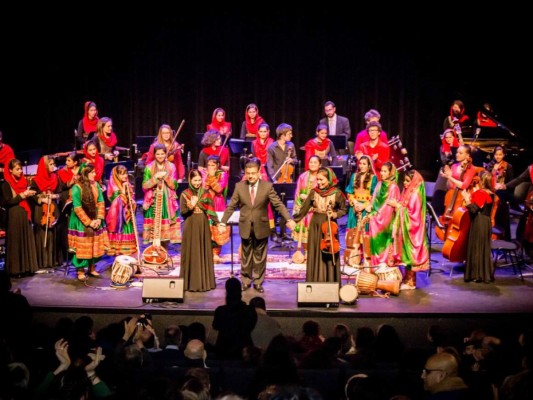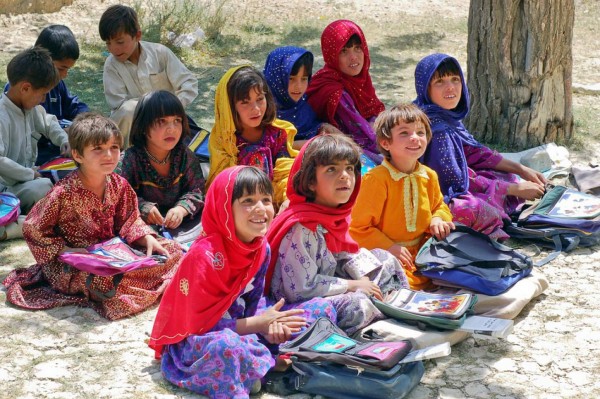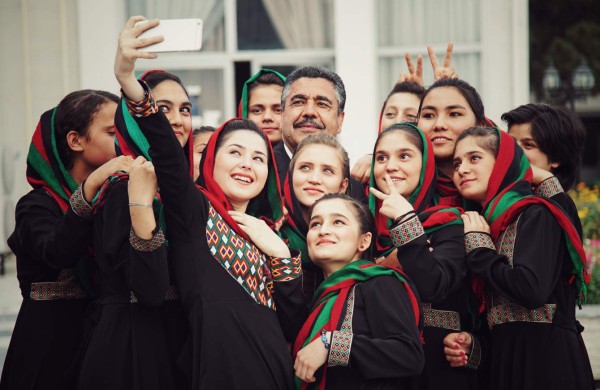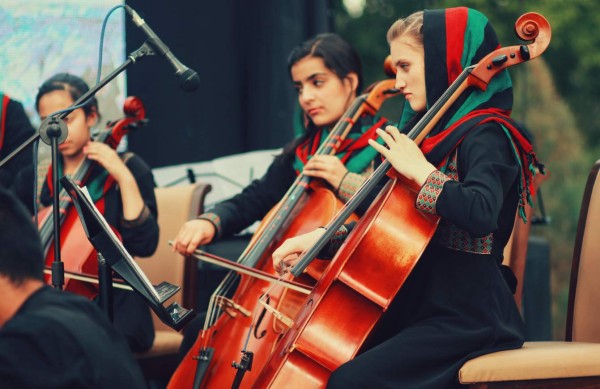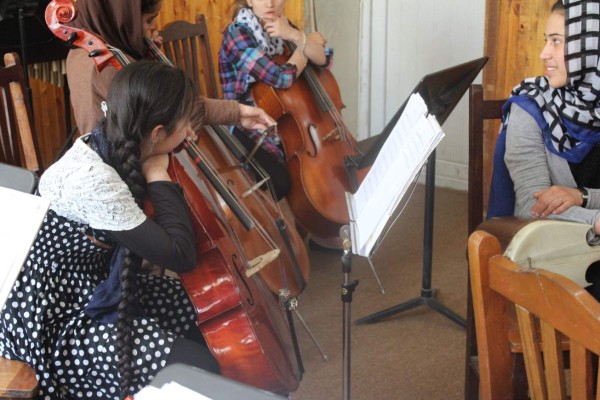In one of the many practice rooms of theAfghanistan National Institute of Music(ANIM), Zarifa Adeeb is playing the violin with admirable dexterity and concentration amidst a group of students. While this young Afghan girl has long dreamt of becoming a pop singer, her passion for classical music has emerged much more recently.
When she was only one year old, Adeeb fled with her family to Pakistan where she stayed until she was 15, before deciding to return to her own country. “I came here at the end of 2014. When I was looking for a music teacher I found this music institute, where you can come and learn music in a professional way.” Currently in her final year, Zarifa Adeeb has been studying the violin for two years. She’s ambitious and hopeful. And yet, only ten years ago, these music lessons would have been completely banned.
ANIM was first opened in 2010 by Ahmad Naser Sarmast, the current director, although its history goes back even further. The institute is rekindling a musical teaching tradition that was severely weakened over the course of recent political upheavals. With the original creation of the music school in 1974, music became a part of the national curriculum in Afghanistan. The school held classes until 1988 when it closed due to the war, and it then stayed shut throughout the rule of the Taliban, since music was made illegal.
The school reopened its classrooms when Hamid Karzai, the former president of Afghanistan, came to power. In 2008, Ahmad Naser Sarmast began a project called the ‘Reconstruction of Aghan Music,’ which was funded by the World Bank. Two years later, the music school became ANIM and began teaching courses in both classical western and eastern music. These include lessons in the violin, viola, guitar, piano, trumpet and flute, as well as more traditional instruments like the robab, ghickak, tambour drum, qashqarcha, the three-stringed sarod, and the delroba.
The first Afghan orchestra exclusively for girls
CurrentlyANIM has around 250 students, including 75 girls. From these ranks, these young women have pooled together their respective talents to form the Zohra Orchestra: the first Afghan orchestra made up exclusively of girls. Started in 2014, this musical group held its first event at the Canadian Embassy in Kabul: not exactly a small-town crowd. Zarifa Adeeb talks about these first days: “When I first joined the school there were only five girls in total.
We wanted to organise a group for women since, that same year at the institute, the boys were allowed to create both rock and pop groups. It was like a competition. So we created a choir. As time went on, other girls came to join the group. That’s when, only three weeks later, we changed from a singing group into an orchestra.”
“The original idea for the Zohra Orchestra came from a young girl called Mina who was a student here. The idea was taken up by Dr Naser Sarmast and, today, we’re witnessing the orchestra’s success,” explains Mohammad Murad Sharkhush, who teaches the qashquarcha, an ancient Afghan instrument, at the institute. Unfortunately, like many peoplethe young girlexperienced some family problems. She had to go back to her home province, and then her family refused to let her return to Kabul.
Mohammad Murad Sharkhush explains that the musicians in the orchestra range from 12 to 21 years of age. Recently, the Zohra Orchestra has had the opportunity to participate in various international programmes, like the Davos Forum in Switzerland. “One of our main successes so far was being able to show to the world a positive image of Afghanistan and its culture. This orchestra has been supported by several countries and is also known as the Angels of Music,” he adds.
A symbol of Afghanistan’s future
Every year, between 300 and 400 applicants take the institute’s entrance exam and only 50 of them are offered places. Around 50% of the candidates are homeless or orphaned children and are put forward by NGOs working on children’s rights in Afghanistan. As well as the Zohra Orchestra, the institute has eleven other music groups.
Mohammad Murad Sharkhush continues: “when a change occurs in a country, it’s better not to worry: you should be positive, and I am optimistic. Afghanistan is a country where art occupies a prominent place in people’s lives.”
At the Afghanistan National Institute of Music, both rich students and orphans attend music classes under the same roof. They express their emotions - whether that means pain, hope, joy or grief - through music,so that one day they will be able to fulfil their childhood dreams. As Ahmad Naser Sarmast says: “The Afghanistan National Institute of Musicis like an island of hope in the dark. This institute is the symbol of the Afghanistan of tomorrow.”
http://www.anim-music.org/
